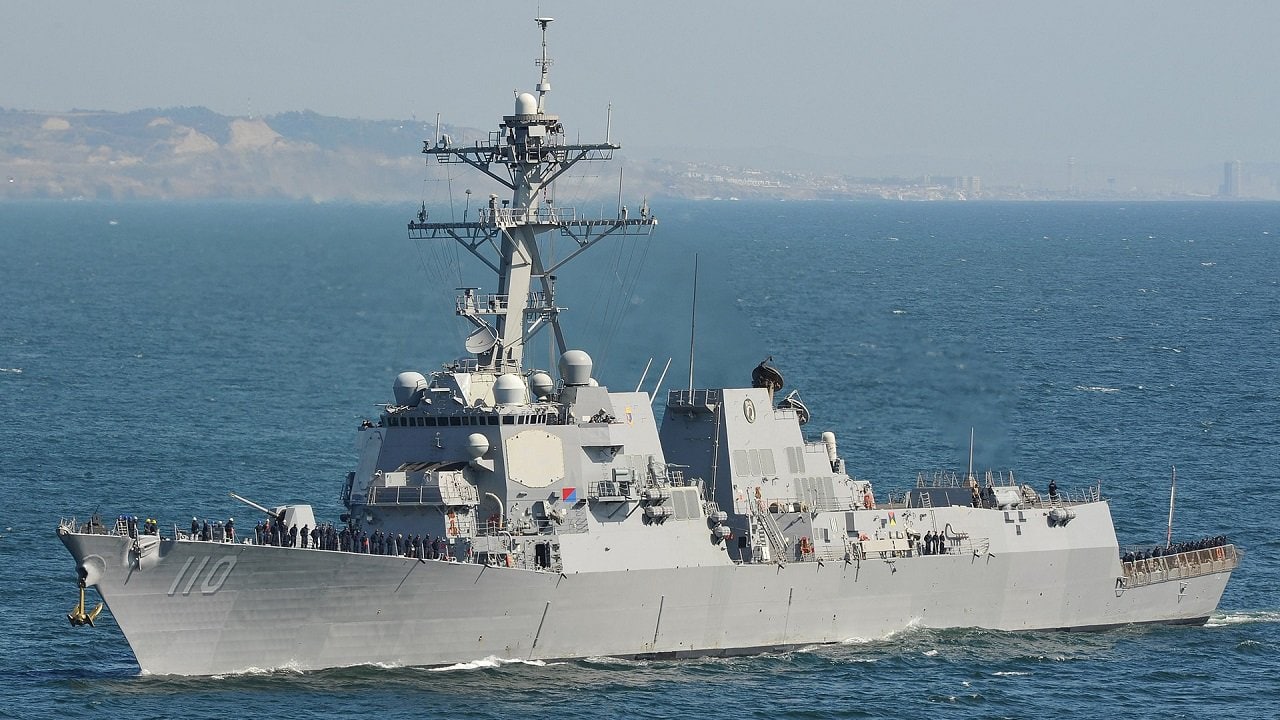Arleigh Burke Flight III, explained – “This ship is built to fight. You had better know how.” That quote comes from U.S. Navy Admiral Arleigh Burke, Chief of Naval Operations from 1955-1961, and long prior to that posting, one of the baddest dudes ever to don a naval officer’s uniform during WWII. His nautical namesake, the Arleigh Burke-class of destroyers, particularly the new Flight III version, is definitely worthy of the old sea dog’s name.
Arleigh Burke Flight III – “Flight” of a Surface Ship?
As strange as the terminology may sound when describing a surface warship, especially to enthusiasts of naval aviation (channeling the Top Gun: Maverick movie here), the Arleigh Burke class “tin cans” are categorized in four separate variants or “Flights.” DDGs 51-71 represent the original design and are designated as Flight I; DDGs 72-78 are Flight II ships; and DDGs 79-124 and DDG 127 are Flight IIA ships. The Flight III baseline will begin with DDGs 125-126 and continue with DDG-128 and follow. The Burke-class, beginning with DDG-51 and the commissioning date of 4 July 1991, replaced the Charles F. Adams class (DDG-2) which had been in service since 1957.
The Burkes were designed with an all-new, all-steel hull form, incorporating much of the Spruance class (DD-963) destroyer propulsion and machinery plant, and the integrated Aegis Weapons System (AWS) proven on the Kidd class (DD 993) destroyers and installed on the larger Ticonderoga class cruisers. AWS is composed of a multi-function phased array radar, advanced AAW and ASW systems, VLS, and the Tomahawk Weapon System. For good old-fashioned ship-to-ship engagements and shore bombardment duties, these destroyers also retain the 5-inch Mk45 Gun.
Regardless of the specific Flight variant, the Burke-class is considered a multi-mission guided-missile destroyer designed to operate offensively and defensively, independently, or as units of Carrier Strike Groups, Expeditionary Strike Groups, and Surface Action Groups in multi-threat environments that include air, surface and subsurface threats. These ultramodern warships will respond to Low Intensity Conflict/Coastal and Littoral Offshore Warfare scenarios, as well as open ocean conflict, providing or augmenting power projection, forward presence requirements and escort operations at sea.
What separates the Flight III variant from the rest of the pack is that this upgrade is centered on the AN/SPY-6(V)1 Air and Missile Defense Radar (AMDR) system that provides vastly increased capability over DDG 51 Flight IIA ships. The AMDR enables Flight III ships to simultaneously perform Anti-Air Warfare (AAW) and Ballistic Missile Defense (BMD), which satisfies the Navy’s critical need for an enhanced surface combatant Integrated Air and Missile Defense (IAMD) capability. Given the shockwaves sent through naval communities around the globe by the Ukrainians’ successful sinking of the Russian Black Sea Fleet flagship Moskva, the improvements to BMD capabilities certainly couldn’t have come at a better time for the U.S. Navy!
Arleigh Burke Flight III is Officially Launched
The first of the Flight III warships, the USS Jack H. Lucas (DDG-125), was successfully launched at Huntington Ingalls Industries, Ingalls Shipbuilding division, in Pascagoula, Mississippi, on 4 June 2021. As DDG-51 Arleigh Burke-class Program Manager, Capt. Seth Miller, remarked, “Flight III ships will provide cutting edge Integrated Air and Missile Defense capability to include significantly greater detection range and tracking capacity. Launching the first Flight III ship, the future Jack H. Lucas, is another important step to delivering Flight III to the Navy.”
Meanwhile, there are two other DDG-51 Flight III class ships currently under construction, namely the future Ted Stevens (DDG-128) and Jeremiah Denton (DDG-129) as Flight III ships. There are a total of 20 DDG 51 class ships under contract at both new construction shipyards, all of which promise to enable the U.S. Navy arsenal to pack an ever more fearsome punch.
Specifications and General Characteristics
Builder: Bath Iron Works, Huntington Ingalls Industries
Combat System Integrator: Lockheed-Martin
Propulsion: Four General Electric LM 2500-30 gas turbines; two shafts, 100,000 total shaft horsepower
Length: 509 1/2 feet (155.29 meters)
Beam: 59 feet (18 meters)
Displacement: 8,230 – 9,700 long tons
Speed: In excess of 30 knots
Crew: 329 Total (32 Officer, 27 CPO, 270 Enlisted)
Armament: Standard Missile (SM-2MR); Vertical Launch ASROC (VLA) missiles; Tomahawk; six MK-46 torpedoes (from two triple tube mounts); Close In Weapon System (CIWS), 5-in. MK 45 Gun, Evolved Sea Sparrow Missile (ESSM)
Aircraft: (Flight IIA and III (DDG 79 AF)) Two LAMPS MK III MH-60 B/R helicopters with Penguin/Hellfire missiles and MK 46/MK 50 torpedoes
Christian D. Orr is a former Air Force officer, Federal law enforcement officer, and private military contractor (with assignments worked in Iraq, the United Arab Emirates, Kosovo, Japan, Germany, and the Pentagon). Chris holds a B.A. in International Relations from the University of Southern California (USC) and an M.A. in Intelligence Studies (concentration in Terrorism Studies) from American Military University (AMU). He has also been published in The Daily Torch and The Journal of Intelligence and Cyber Security.

